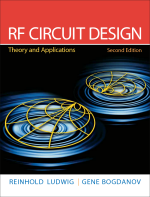Chapter 2: Transmission Line Analysis

As discussed in Chapter 1, higher frequencies imply decreasing wavelengths. The consequence for an RF system is that voltages and currents no longer remain spatially uniform when compared to the geometric size of the discrete circuit elements; they have to be treated as propagating waves. Since Kirchhoff's voltage and current laws do not account for these spatial variations, we must significantly modify the conventional lumped circuit analysis.
The purpose of this chapter is to make the transition from lumped to distributed circuit representation, and in the process develop one of the most useful equations: the spatially dependent impedance representation of a generic RF transmission line configuration. The application of this equation to the analysis and design of high-frequency circuits is going to assume central importance in subsequent chapters. While developing the background of transmission line theory in this chapter, we have purposely attempted to minimize (albeit not eliminate) the reliance on electromagnetics. The motivated reader who would like to delve deeper into the concepts of electromagnetic wave theory is referred to a host of excellent books listed at the end of this chapter.
